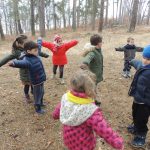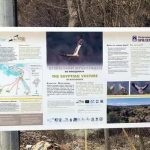We celebrated the World Wetlands day on the 4th of February in Resen, jointly with the Municipality of Resen. This year we organized educational activities for the youngest students in the kindergarten in Jankovec. We conducted experiments which explain how feathers provide insulation and introduced the students to the most important wetland bird species from their region. These birds are indicators of climate change and they are in the focus of World Wetland Day. A connection to nature needs to be established at a young age and that is why we firmly support early education.
On the same day the municipality held a workshop for the implementation of the METT tool which assesses the efficiency in management of protected areas. This time the tool was deployed with the Prespa region in mind. The Prespa Lake has been a Ramsar site since 1995 because of the great number of rare and endangered birds.

 – Prespa Lake hosts sixty one species of birds which are on the list of protected species on the Bern Conventions. Because of this, the Municipality of Resen, as the manager, has taken on a set of measures and activities for sustainable management of the “monument of nature” Prespa Lake and our future intent is jointly with the management of other protected areas to conserve the important plant and animal species of the Prespa region, stated Ajman Almala, Manager of the Environment Sector of the Municipality of Resen.
– Prespa Lake hosts sixty one species of birds which are on the list of protected species on the Bern Conventions. Because of this, the Municipality of Resen, as the manager, has taken on a set of measures and activities for sustainable management of the “monument of nature” Prespa Lake and our future intent is jointly with the management of other protected areas to conserve the important plant and animal species of the Prespa region, stated Ajman Almala, Manager of the Environment Sector of the Municipality of Resen.
The World Wetland day is actually the date when the Wetland Habitats Convention was adopted in 1971 in the Iranian city of Ramsar. This is the most important Convention that covers wetlands. The goal of the Ramsar sites is to preserve and sustainably use all water habitats through activities at local and national levels, as well as through international cooperation. Prespa Lake is the first Ramsar site in Macedonia. Macedonia nominated this lake and its surroundings having in the mind the importance of an ecosystem that is 2-3 million years old and provides goods and services for people as a result of the rich biodiversity and diversity of habitats.






